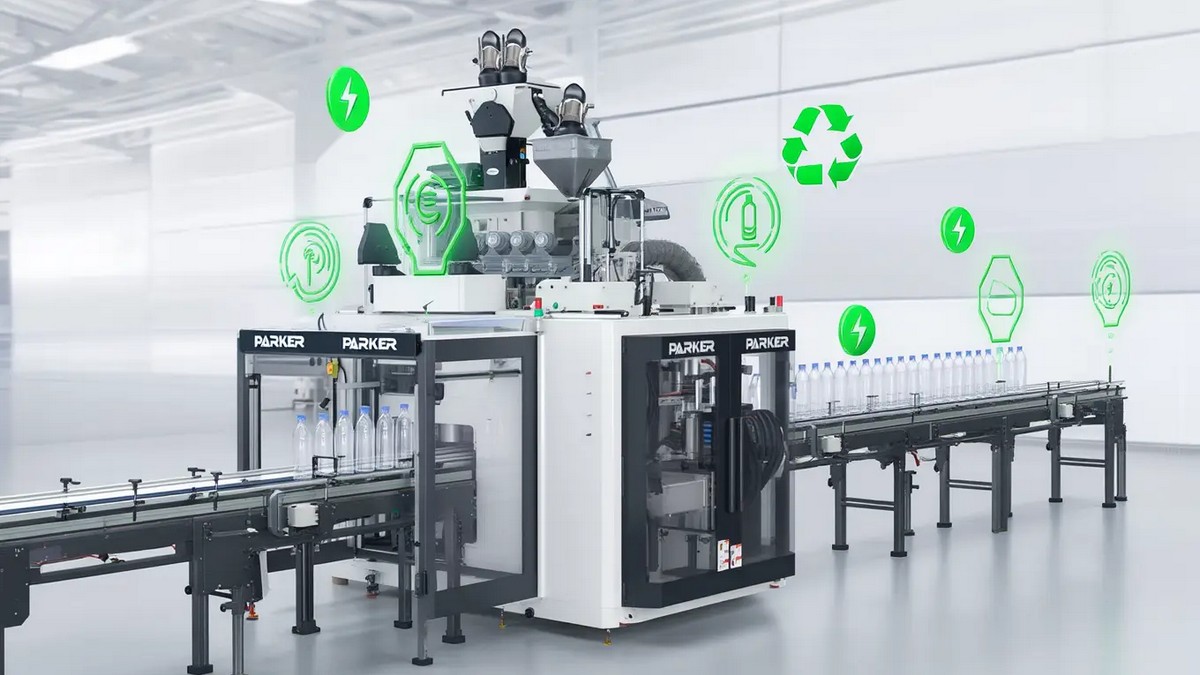The "decentralization" of the blockchain has many advantages, but it does not mention its shortcomings. In fact, "decentralization" and "centralization" have their own advantages and disadvantages, so "using both" is a more feasible way, why?
Blockchain has the characteristics of decentralization, immutability, and trustworthiness. Many people keep touting the advantages of blockchain "decentralization", but do not mention its shortcomings. "Centralization" has its own advantages and disadvantages, so "using both" is a more feasible way, why?
Most Applications of Public Chains are Cryptocurrencies
A blockchain that anyone can build and participate in is called "Public blockchain". Anyone can read, send, and confirm transaction data and participate in the consensus process, which is usually considered a "decentralized" blockchain. blockchain. For example: Bitcoin, Ethereum, etc. At present, most of the applications of the public chain are cryptocurrencies. Since there is a large market for underground finance, unless the government prohibits it, it will continue to operate.
The miners of the public chain do not know each other, and are unlikely to collude to tamper with the data of the blockchain, so it satisfies "decentralization"; if the public chain uses mining operations, it can satisfy "non-tampering"; although the public chain cannot be tampered, but it does not mean that it can be trusted. A database can be trusted. Two conditions must be met: first verify that the data is correct, and then confirm that it cannot be tampered with after writing to the database. The public chain can only meet the second condition, but cannot meet the first condition, so the public chain "may not" be trusted.
The Consortium Blockchain is Suitable for Application in Various Business Models
The blockchain established and participated by multiple specific enterprises or organizations is called "Consortium Blockchain", which is suitable for use in transactions, settlements, clearing and other work between institutions, so that specific institutions can trust each other. Since the participants of the alliance chain have a high degree of trust after screening, it is not necessary to use the energy-wasting mining operation like Bitcoin, and can use "Practical Byzantine" instead. Practical Byzantine Fault Tolerance (PBFT: Practical Byzantine Fault Tolerance)” or other algorithms to improve efficiency, coupled with a small number of nodes, so the transaction speed is faster, suitable for various business models.
However, we must pay special attention to the fact that the consortium blockchain is still divided into true and false. "True Consortium Blockchain" means that the members of the alliance are completely independent and equal to each other, and no one member can dominate the other members, the participants are all large enterprises; "Fake Consortium Blockchain" means that members are closely related to each other, which may be branches, subsidiaries, and related enterprises. One parent company can control more than 51% of the node, if violates the 51% rule, the blockchain will lose its effectiveness. The blockchains currently used by many companies belong to the "Fake Consortium Blockchain", so be careful when judging.
The members of the true consortium blockchain are completely independent and equal to each other, and are unlikely to collude and tamper with the data of the blockchain, so it satisfies the "decentralization"; the true consortium blockchain can use the Practical Byzantine Fault Tolerance (PBFT) algorithm and therefore satisfy the "Impossible" "Falsification"; although the real consortium blockchain cannot be tampered with, it does not mean that it can be trusted, so the true consortium blockchain "may not" be trusted; the members of the fake consortium blockchain are closely related to each other, and may collude to tamper with the information of the blockchain, so there is no "Decentralization"; the fake consortium blockchain has a parent company that can control more than 51% of the nodes, if violates the 51% rule, there is no "non-tampering"; since the fake consortium blockchain is not immutable, of course, there is no "trustworthy".
Private Chains are Useless
A blockchain established by a single enterprise or organization is called a "Private Blockchain". Only specific people can read, send, and confirm transaction data, participate in the consensus process, and can be manipulated and modified to transform the original simple data structure. Makes it complicated and totally violates the 51% rule, so it's useless.
The private chain is established by a single enterprise or organization, which may tamper with the data of the blockchain, so there is no “decentralization”; because the private chain is established by a single enterprise or organization that controls more than 51% of the nodes, if violates the 51% rule, so there is no “unable to”. Tampering"; since there is no private chain that cannot be tampered with, of course there is no "trustworthy".
Why Does Blockchain Not Mean "Decentralization"?
When many people hear the "chain" of the block, they think it is a special technology to "chain" many computers. In fact, the block is a passbook, and the blockchain is a passbook chain (many passbooks), so the block chain is just a record. The data structure of the data is just the data structure. The algorithm ensures that the transaction records cannot be tampered with. At the same time, it is copied in many copies and stored in the computers of many miners. Of course, it can also be stored in only one computer. If we put the blockchain (passbook chain) stored in a computer, how can it be considered "decentralized"? Many articles mention the blockchain, and the first feature is decentralization. This is a wrong concept. It should be said that the blockchain can (but not necessarily) be decentralized.
"Public chain" is currently the only blockchain that is recognized as "more in line with" the conditions of decentralization; whether the "consortium blockchain" is decentralized or not, it must be confirmed whether it is true or false. If it is a true consortium blockchain, it is in line with decentralization. If the chain has a parent company that can control more than 51% of the nodes, it is not in line with decentralization; as for the "private chain" established by a single enterprise or organization, it is completely centralized.
Some people may wonder why the public chain is "more in line with" decentralization, rather than "completely in line with" decentralization, this is because as long as someone masters more than 51% of the computing power, it is still possible to manipulate the public chain, for example: Bitcoin There are more than 10,000 miners scattered all over the world. At first glance, they are decentralized. In fact, mining is based on the computing power of mining machines. At present, more than 51% of the computing power is controlled by some world-renowned mining companies. In the hands of the company, it is true that there have been experts who have questioned whether Bitcoin can be trusted.
Why Does Blockchain Not Mean "Immutable"?
The blockchain is just a data structure for recording data. The algorithm ensures that the transaction records cannot be tampered with, but this can only be established in the "public chain", because there are more than 10,000 miners in Bitcoin, and more than 10,000 people are required to conspire to tamper with it. The Bitcoin blockchain is very difficult; whether the "consortium blockchain" cannot be tampered with must be confirmed. If it is a true consortium blockchain, it is incompatible with tampering. If it is a fake consortium blockchain, there is a parent company that can control more than 51% of the nodes, then this the blockchain can be tampered with; as for the "private chain" established by a single enterprise or organization, it can be tampered with any way you want, and even algorithms can't prevent it!
Why Does Blockchain Not Mean "Trustworthy"?
The blockchain is just a data structure for recording data. The algorithm ensures that transaction records cannot be tampered with. Therefore, some people call it a "Trust Machine", but it does not mean "trustworthy". A database can be trusted, and two conditions must be met: first verify that the data is correct, and then confirm that it cannot be tampered with after writing to the database. The blockchain can't help the first condition at all, it can only satisfy the second condition, and it must be a public chain or a true consortium blockchain. If it is a fake consortium blockchain or a private chain, even the second condition cannot be fulfilled. More importantly, usually the database is fake, most of it is not because someone has tampered with it afterwards, but because the information written in the beginning is fake!
Blockchain is Definitely Not A "Trust Machine"
Our world is built on trust mechanisms, for example: we hand over our personal property to banks for safekeeping, which is based on trust in the financial system; we hand over personal information to the government for safekeeping, which is based on trust in government institutions, many people keep advocating that the old trust mechanism is insufficient for protection. For example, everyone completely relies on a third-party trust agency to provide proof of value and proof of ownership. What if the third-party trust agency is fraudulent? And the old proof method has many shortcomings, including: not easy to pass, easy to forge, inefficiency, regulatory restrictions and so on.
Therefore, the blockchain must be used as a trust machine, because the blockchain can encrypt and protect the shared ledger to ensure that the data cannot be tampered with. The decentralization of the blockchain does not need to rely on third-party trust agencies. innovative applications, these are completely misleading claims.
In fact, the use of blockchain does not solve the problem of insufficient protection of the old trust mechanism. What the "public chain" and "true consortium blockchain" in the blockchain can achieve is "decentralization" and "immutability". Relying on blockchain technology cannot be trusted, and in the end, it must rely on a third-party trust organization to be trusted, just like the old trust mechanism.
Byzantine Algorithm!? Why is Blockchain So Complicated?
If Bitcoin or blockchain wants to be designed to be completely decentralized, it must have "clear rules and strict organization". This is the biggest difficulty of blockchain at present. Therefore, strict communication rules must be formulated. No matter how it is designed, there will still be some loopholes, which is why it is said that some problems are solved with the blockchain, but some problems are created.
What Can Be Done to Increase the Operational Efficiency of the Blockchain?
The easiest way is to change the algorithm not to mine, such as using "Proof of Stake (PoS)"; you can also change the data structure or operating rules of the blockchain, such as: Bitcoin Cash (BCH), Bitcoin Gold (BTG) and Bitcoin Diamond (BCD) are new cryptocurrencies derived from Bitcoin's "Hard fork", but these methods have limited effect.
The most effective way is to try to make it more "centralized", for example: every transaction between members in the exchange is stored in the exchange's computer (centralized), when someone wants to send bitcoins to another exchange or private account, and then write it into the miner's computer (decentralized), so that tens of thousands of bitcoin transactions can be made every second.
In addition, some cryptocurrencies try to cut the blockchain that was originally scattered in the computers of more than 10,000 miners around the world into 10 different "sub-blockchains", but doing so is actually using partial "centralization" to replace “decentralization”. Speaking of which, it is a matter of fish and bear’s paw to be completely decentralized and efficient.
Blockchains using the above new methods are currently being researched and developed, but they also have their own problems. So far, there is no real perfect method. What is certain is that both "decentralization" and "centralization" are each has its own advantages and disadvantages, so "decentralization" is not a panacea, and "using both" is a more feasible way.









.jpg)
.jpg)
.jpg)


.jpg)